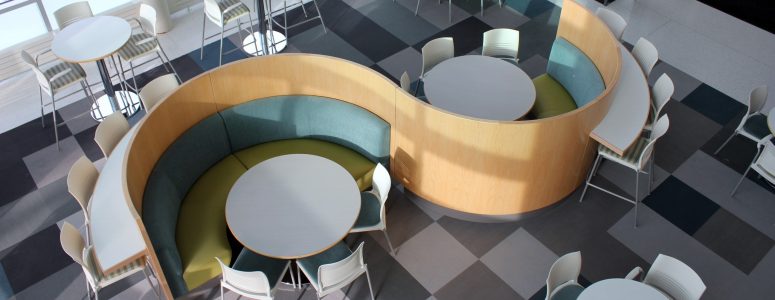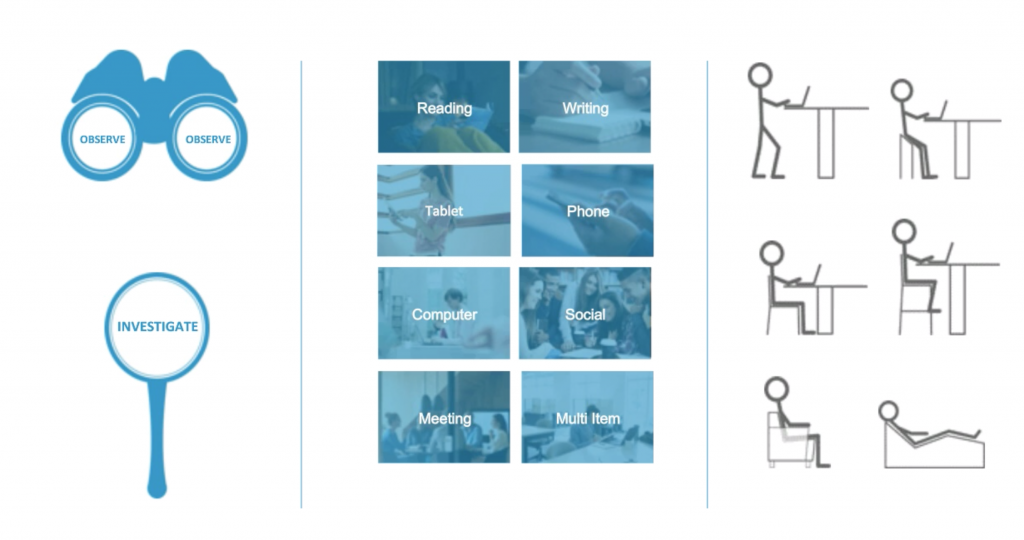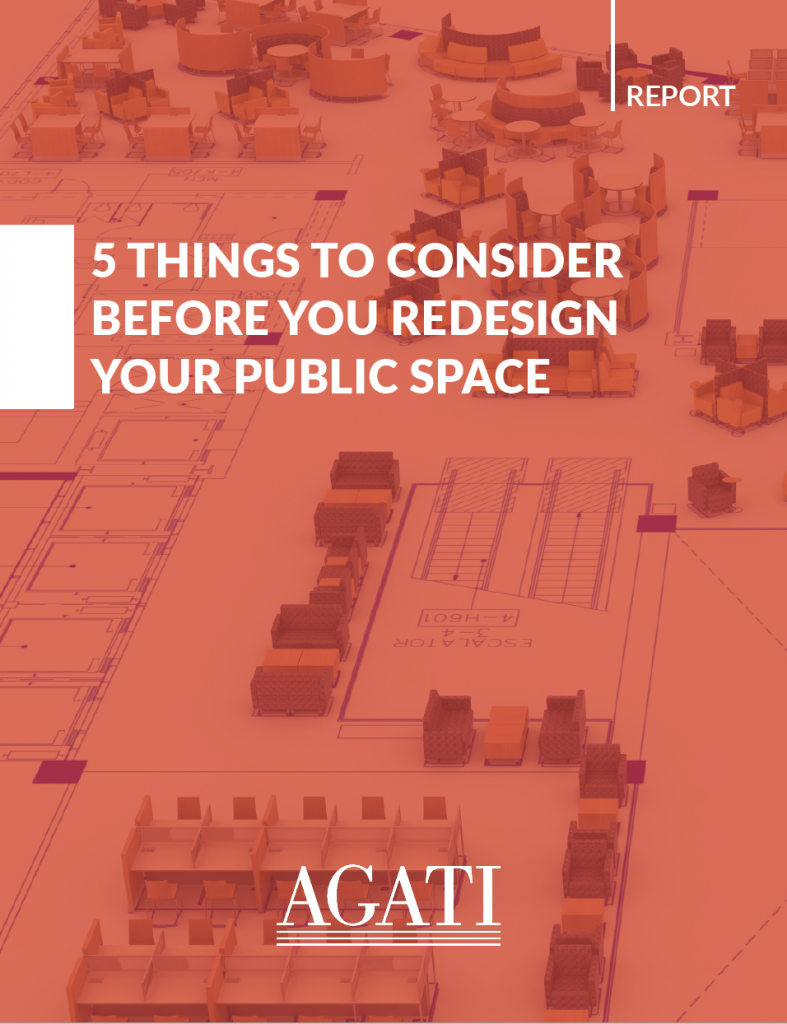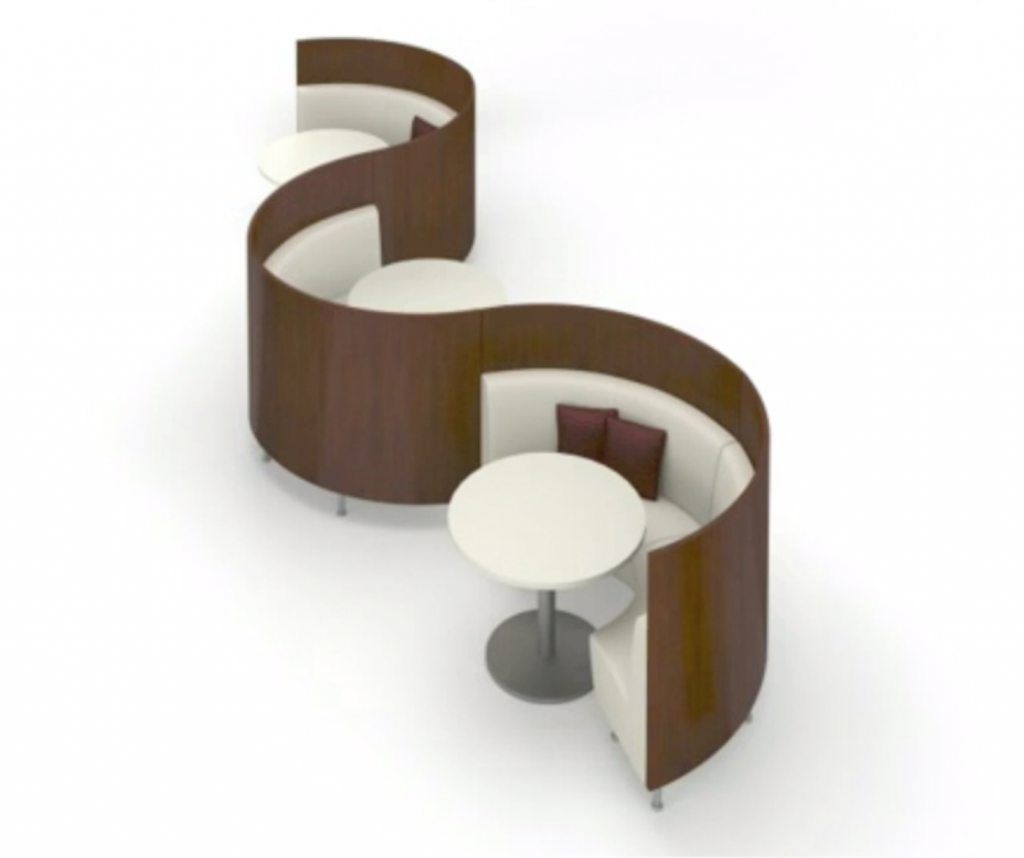
This is the fourth post in our Library Seating series, as we explore the role seating plays in a library and how to effectively furnish a space to support actual patterns of use.
So far in this series, we’ve covered quite a bit as we discuss the importance of library chairs. After starting with the history of seating, we explored how to observe and investigate a space and how to pair activity patterns with the correct style of seating. Here’s a visual overview of the conversation so far:

Combining Form and Function in Library Chairs
If you remember back to the first post in this series, we highlighted the historical struggle that has existed for years between form and function. And in the second and third posts, we dove deep into the importance of furniture that meets the functional needs patrons have. But what role should form and aesthetics play in our library seating?
This is really where we have our biggest disconnect because the reality is that when the majority of people furnish a library, they jump straight to aesthetic before practicality.
As an example, we’ve recently seen a lot more booth and lounge-style seating come into spaces. This visually makes sense as they look comfy and it feels like a warm and inviting option (because it is!), but we need to understand the implications of furniture choices and how to pair these pieces with the intended function.
So the question becomes this: How can we create an inviting environment for our patrons without sacrificing comfort and functionality?
The Value of Well-Designed Library Chairs
Aesthetic matters. As we’ve written about on our blog before, strong design is what brings everything together. It’s what completes a piece of furniture and makes a space feel welcoming the minute someone walks in. And especially in a library, this aesthetic needs to be as long-lasting as the piece of furniture itself.
From wood library chairs to lounge library chairs, when furniture is carefully designed, people feel invited, they feel balanced, and they feel comfortable.
Further, when it comes down to it, good design isn’t strictly visual. It’s also structural. In public spaces, people often treat furniture with a little less care than they would the furniture at their home. This is why the real beauty comes when artistic form is blended with long-lasting durability. While this aspect of design may at times go unnoticed, well-designed library chairs help create a space that feels welcoming, promotes productivity, and supports focused learning for years to come.
Form + Function = ?
When it comes down to it, form and function have to be completely united. You can’t effectively have one without the other. And when you bring these two things together through your library seating, this is when a truly welcoming and useful space is created.
Not only will the space look and feel the way you want to come across to your community, it will also directly serve the incredibly wide range of needs that your patrons have.
And that is what your mission is all about.
PREVIOUS POST | Selecting the Right Chairs: Pairing Furniture That Fits Activity Patterns
NEXT POST | Library Seating FAQ: The Most Common Questions We Receive About Library Chairs
Want to learn how we unite design and durability? As one of the few companies that designs our library chairs for the unique demands of high-traffic spaces, we are confident we can provide the customized solutions necessary to serve your patrons well and meet the specific functional, visual, and technological needs in your space. Let’s start a conversation.
FREE RESOURCE:
Whether it’s a full or partial redesign, it’s important to know what questions to ask and what to consider. After over 35 years of designing furniture for public spaces, we’ve learned a few things to help make the redesign a success. Download this free resource to learn 5 things to consider before you redesign:


